What Are Brown Dwarfs?
What are brown dwarfs?
In order to understand what is a brown dwarf, we need to understand the difference between a star and a planet. It is not easy to tell a star from a planet when you look up at the night sky with your eyes. However, the two kinds of objects look very different to an astronomer using a telescope or spectroscope. Planets shine by reflected light; stars shine by producing their own light. So what makes some objects shine by themselves and other objects only reflect the light of some other body? That is the important difference to understand – and it will allow us to understand brown dwarfs as well.

As a star forms from a cloud of contracting gas, the temperature in its center becomes so large that hydrogen begins to fuse into helium – releasing an enormous amount of energy which causes the star to begin shining under its own power. A planet forms from small particles of dust left over from the formation of a star. These particles collide and stick together. There is never enough temperature to cause particles to fuse and release energy. In other words, a planet is not hot enough or heavy enough to produce its own light.

Brown dwarfs are objects which have a size between that of a giant planet like Jupiter and that of a small star. In fact, most astronomers would classify any object with between 13 times the mass of Jupiter and 75 times the mass of Jupiter to be a brown dwarf. Given that range of masses, the object would not have been able to sustain the fusion of hydrogen like a regular star; thus, many scientists have dubbed brown dwarfs as “failed stars”.

A Trio of Brown Dwarfs
This artist’s conception illustrates what brown dwarfs of different types might look like to a hypothetical interstellar traveler who has flown a spaceship to each one. Brown dwarfs are like stars, but they aren’t massive enough to fuse atoms steadily and shine with starlight – as our sun does so well.

On the left is an L dwarf, in the middle is a T dwarf, and on the right is a Y dwarf. The objects are progressively cooler in atmospheric temperatures as you move from left to right. Y dwarfs are the newest and coldest class of brown dwarfs and were discovered by NASA’s Wide-field Infrared Survey Explorer, or WISE. WISE was able to detect these Y dwarfs for the first time because it surveyed the entire sky deeply at the infrared wavelengths at which these bodies emit most of their light. The L dwarf is seen as a dim red orb to the eye. The T dwarf is even fainter and appears with a darker reddish, or magenta, hue. The Y dwarf is dimmer still. Because astronomers have not yet detected Y dwarfs at the visible wavelengths we see with our eyes, the choice of a purple hue is done mainly for artistic reasons. The Y dwarf is also illustrated as reflecting a faint amount of visible starlight from interstellar space.
In this rendering, the traveler’s spaceship is the same distance from each object. This illustrates an unusual property of brown dwarfs – that they all have the same dimensions, roughly the size of the planet Jupiter, regardless of their mass. This mass disparity can be as large as fifteen times or more when comparing an L to a Y dwarf, despite the fact that both objects have the same radius. The three brown dwarfs also have very different atmospheric temperatures. A typical L dwarf has a temperature of 2,600 degrees Fahrenheit (1,400 degrees Celsius). A typical T dwarf has a temperature of 1,700 degrees Fahrenheit (900 degrees Celsius). The coldest Y dwarf so far identified by WISE has a temperature of less than about 80 degrees Fahrenheit (25 degrees Celsius).
Sources: starchild.gsfc.nasa.gov & nasa.gov
image credit: NASA / JPL-Caltech
More Posts from Xyhor-astronomy and Others
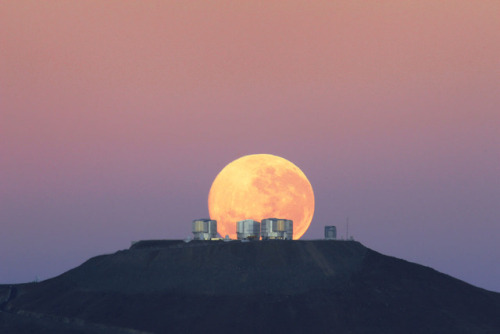
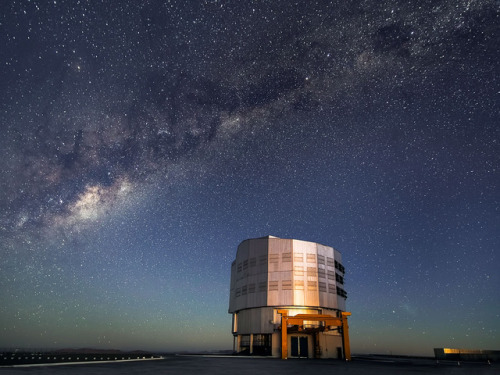
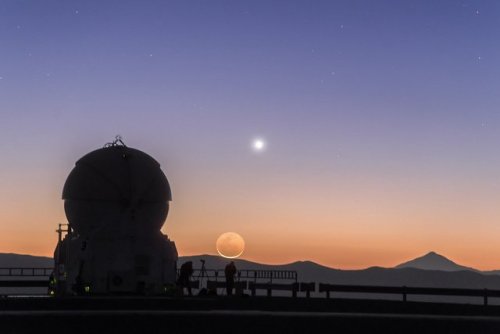
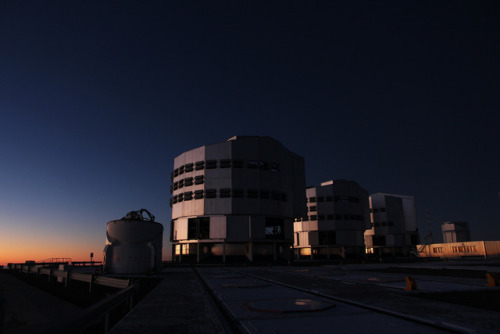

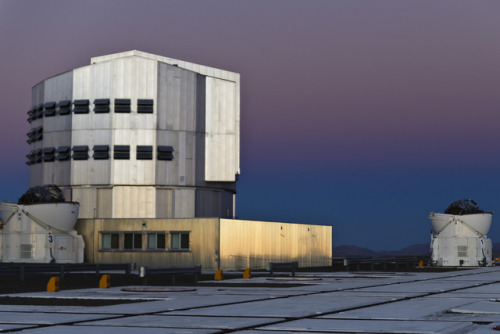
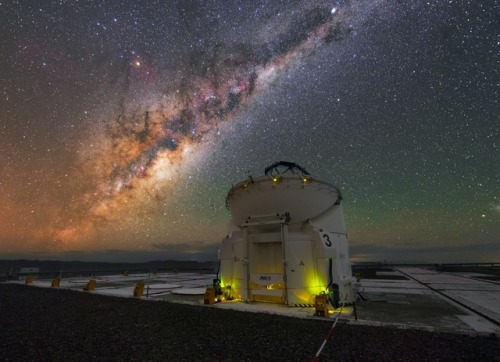
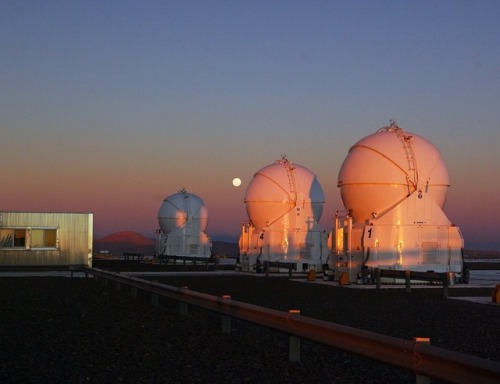
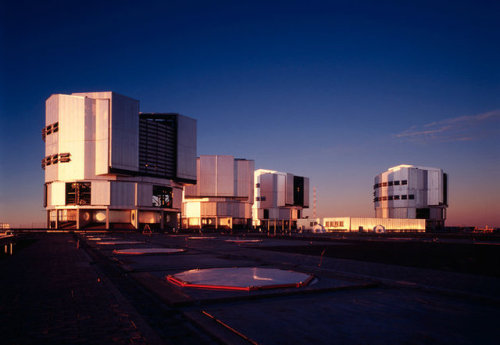
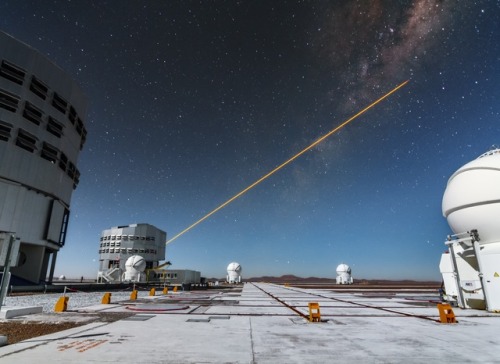
Very Large Telescope (VLT)
The Very Large Telescope (VLT) it is the world’s most advanced optical instrument, consisting of four Unit Telescopes with main mirrors of 8.2m diameter and four movable 1.8m diameter Auxiliary Telescopes.
The telescopes can work together, to form a giant ‘interferometer’, the ESO Very Large Telescope Interferometer, allowing astronomers to see details up to 25 times finer than with the individual telescopes. The light beams are combined in the VLTI using a complex system of mirrors in underground tunnels where the light paths must be kept equal to distances less than 1/1000 mm over a hundred metres. With this kind of precision the VLTI can reconstruct images with an angular resolution of milliarcseconds, equivalent to distinguishing the two headlights of a car at the distance of the Moon.
The 8.2m diameter Unit Telescopes can also be used individually. With one such telescope, images of celestial objects as faint as magnitude 30 can be obtained in a one-hour exposure. This corresponds to seeing objects that are four billion (four thousand million) times fainter than what can be seen with the unaided eye.
Source & images: eso.org

The Heart Nebula or IC 1805, lies some 7500 light years away from Earth and is located in the Perseus Arm of the Galaxy in the constellation Cassiopeia. This is an emission nebula showing glowing ionized hydrogen gas and darker dust lanes.
Image Credit: Simon Addis









5 Questions You Were Too Embarrassed To Ask About The Expanding Universe
“5.) Are there galaxies moving away faster than the speed of light, and isn’t that forbidden? From our point of view, the space in between us and any distant point is expanding. The farther away something is, the faster it appears to recede from us. Even if the expansion rate were tiny, an object far enough away would eventually cross that threshold of any finite speed, since an expansion rate (a speed-per-distance) multiplied by a great enough distance will give you a speed as fast as you want. But this is okay in General Relativity! The law that nothing can travel faster than the speed of light only applies to an object’s motion through space, not to the expansion of space itself. In reality, the galaxies themselves only move around at speeds that are hundreds or thousands of km/s, much lower than the 300,000 km/s speed limit set by the speed of light. It’s the expansion of the Universe that causes this recession and the redshift, not a true galactic motion.”
The idea that the spatial fabric of the Universe itself is expanding, and that’s what’s behind the observed relationship between redshift and distance has long been controversial, and also long-misunderstood. After all, if more distant objects appear to recede more quickly, couldn’t there be a different explanation, like an explosion that flung many things outward? As it turns out, this isn’t a mere difference in interpretation, there are observations we can make that tell us the answer! The Universe is not expanding ‘into’ anything, despite what your intuition might tell you. The Hubble ‘constant’ isn’t actually a constant, but is rather decreasing as time goes on. The Universe looks like it’s going to expand forever, but even that scientific conclusion is subject to revision depending on what data shows in the future. And although 97% of the galaxies in the Universe are already unreachable, it isn’t a violation of relativity or a faster-than-light phenomenon that’s to blame.
Come learn the answers to five questions about the expanding Universe that many are too embarrassed to ask!

Curiosity drill site reveals that under its red surface, Mars is grey-blue
via reddit
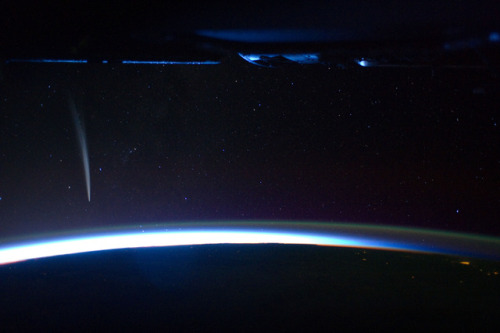
Comet Lovejoy is visible near Earth’s horizon in this nighttime image photographed by NASA astronaut Dan Burbank, Expedition 30 commander, onboard the International Space Station on Dec. 21, 2011.
Image credit: NASA

The Extraordinary Core of a Neutron Star
Lucy Reading-Ikkanda/Quanta Magazine; Source: Feryal Özel

Should there be a holiday called Astronomy Day?
Where lights are to be turned off for the entire night so everyone could see the stars?
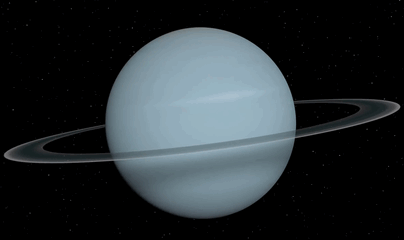
Planet Uranus ♅
Equatorial Diameter: 51.118 km
Satellites: 27
Notable satellites: Oberon, Titania, Miranda, Ariel & Umbriel
Orbit Distance: 2.870.658.186 km (19 AU)
Orbit Period: 84 Earth years
Surface Temperature: -220°C
Discovered Date: March 13th 1781
Discovered By: William Herschel
Image credit: Oscar Malet

Oct. 4, 1957 - Sputnik, the Dawn of the Space Age via NASA http://ift.tt/2hNf1Yq
-
 educari reblogged this · 1 year ago
educari reblogged this · 1 year ago -
 infernalserpentry liked this · 1 year ago
infernalserpentry liked this · 1 year ago -
 caffeinsanity liked this · 1 year ago
caffeinsanity liked this · 1 year ago -
 azedoth reblogged this · 3 years ago
azedoth reblogged this · 3 years ago -
 helpsomeonescoming-thesecond reblogged this · 4 years ago
helpsomeonescoming-thesecond reblogged this · 4 years ago -
 timetravelinganimefreak liked this · 4 years ago
timetravelinganimefreak liked this · 4 years ago -
 morganites-doots liked this · 4 years ago
morganites-doots liked this · 4 years ago -
 nemo-draco reblogged this · 4 years ago
nemo-draco reblogged this · 4 years ago -
 nemo-draco liked this · 4 years ago
nemo-draco liked this · 4 years ago -
 brendaissleepy liked this · 4 years ago
brendaissleepy liked this · 4 years ago -
 avianreptiles liked this · 4 years ago
avianreptiles liked this · 4 years ago -
 dadpostrex liked this · 4 years ago
dadpostrex liked this · 4 years ago -
 i-have-a-permit liked this · 4 years ago
i-have-a-permit liked this · 4 years ago -
 dankxsinatra liked this · 4 years ago
dankxsinatra liked this · 4 years ago -
 pineowlple liked this · 4 years ago
pineowlple liked this · 4 years ago -
 astra-peraspera reblogged this · 4 years ago
astra-peraspera reblogged this · 4 years ago -
 artwriteanimationinspo reblogged this · 4 years ago
artwriteanimationinspo reblogged this · 4 years ago -
 earthgirlaesthetic liked this · 4 years ago
earthgirlaesthetic liked this · 4 years ago -
 mrganymede reblogged this · 4 years ago
mrganymede reblogged this · 4 years ago -
 shirubia reblogged this · 4 years ago
shirubia reblogged this · 4 years ago -
 lost-mimikyu reblogged this · 4 years ago
lost-mimikyu reblogged this · 4 years ago -
 sparklemiranda liked this · 4 years ago
sparklemiranda liked this · 4 years ago -
 phantomwitch16 liked this · 4 years ago
phantomwitch16 liked this · 4 years ago -
 longlivejoseee liked this · 4 years ago
longlivejoseee liked this · 4 years ago -
 nyzale liked this · 4 years ago
nyzale liked this · 4 years ago -
 theowlishlibrarian liked this · 4 years ago
theowlishlibrarian liked this · 4 years ago -
 easyrawlins2363 liked this · 4 years ago
easyrawlins2363 liked this · 4 years ago -
 meraxesbalerion liked this · 4 years ago
meraxesbalerion liked this · 4 years ago -
 sadpenguin00 liked this · 4 years ago
sadpenguin00 liked this · 4 years ago -
 zabarisreallyreal liked this · 4 years ago
zabarisreallyreal liked this · 4 years ago -
 pada29 liked this · 4 years ago
pada29 liked this · 4 years ago -
 cacti-magi liked this · 4 years ago
cacti-magi liked this · 4 years ago -
 starry-max liked this · 4 years ago
starry-max liked this · 4 years ago -
 monochromejones reblogged this · 4 years ago
monochromejones reblogged this · 4 years ago -
 handsxofxstone reblogged this · 4 years ago
handsxofxstone reblogged this · 4 years ago -
 rob370 liked this · 4 years ago
rob370 liked this · 4 years ago -
 hollow-kitsune liked this · 4 years ago
hollow-kitsune liked this · 4 years ago
For more content, Click Here and experience this XYHor in its entirety!Space...the Final Frontier. Let's boldly go where few have gone before with XYHor: Space: Astronomy & Spacefaring: the collection of the latest finds and science behind exploring our solar system, how we'll get there and what we need to be prepared for!
128 posts